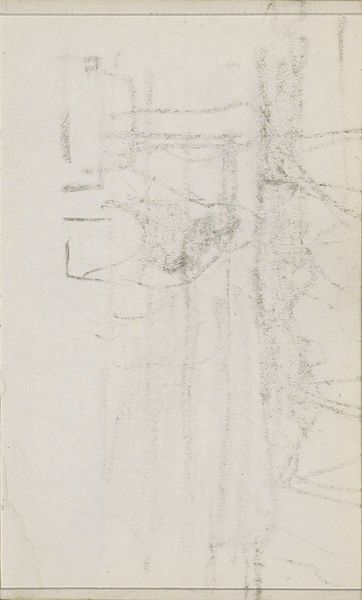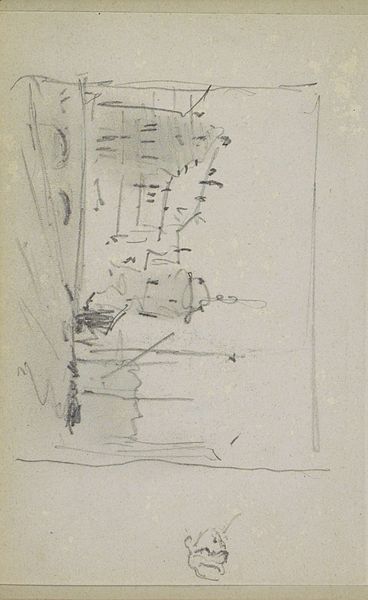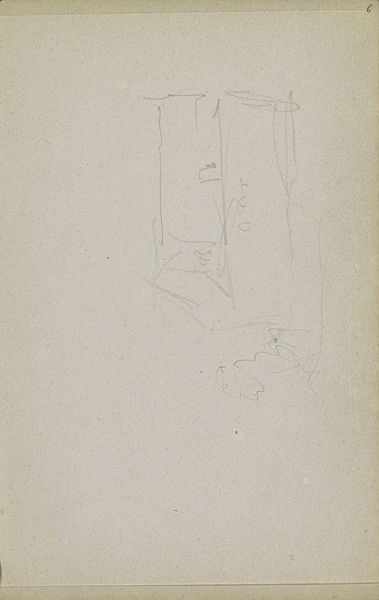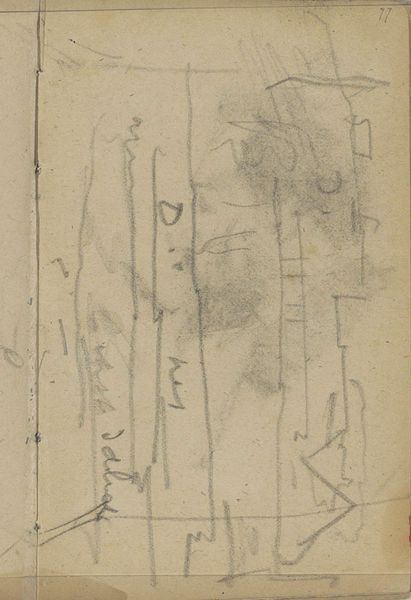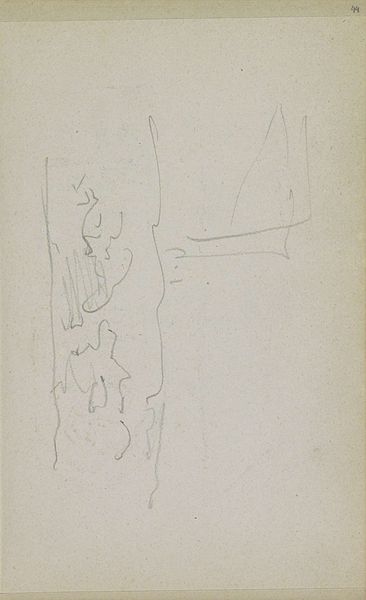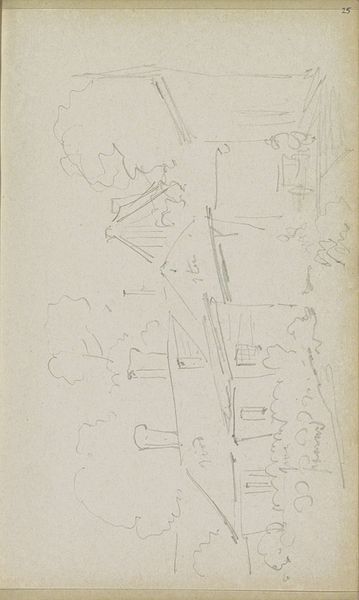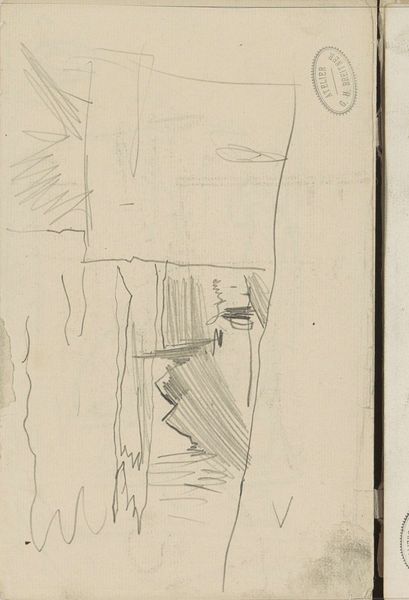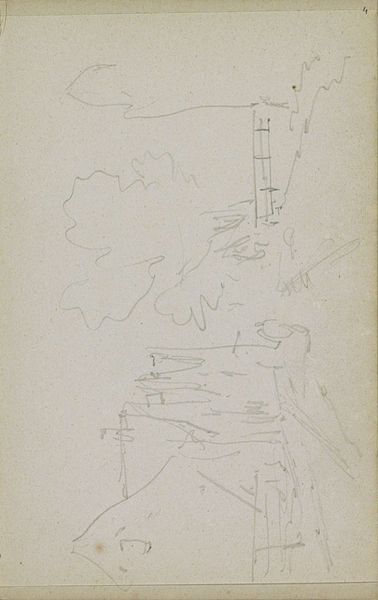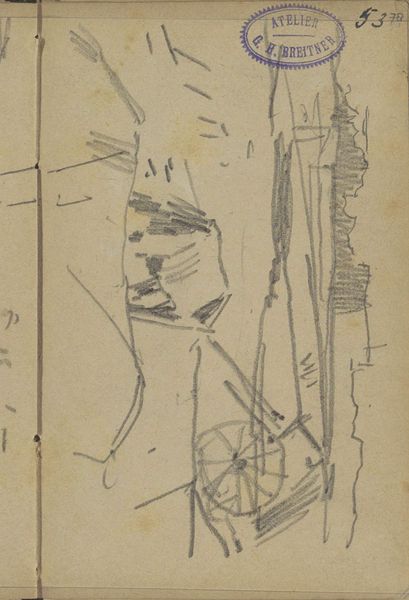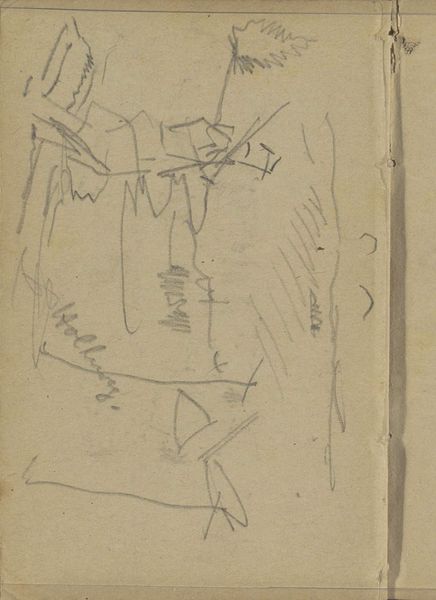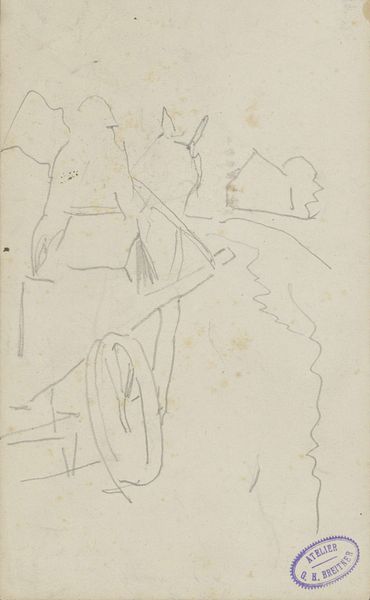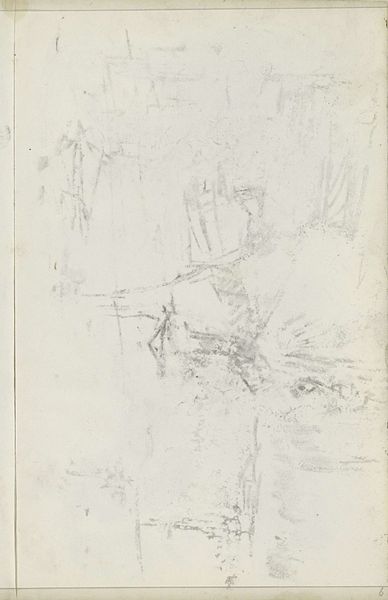
drawing, pencil
#
drawing
#
landscape
#
pencil
#
cityscape
#
street
#
realism
Copyright: Rijks Museum: Open Domain
Curator: Right, let's discuss Adrianus Eversen's pencil drawing, "Gezicht op een straat met een kerk," which translates to "View of a street with a church," dating roughly between 1828 and 1897. Editor: Mmm, wispy. Like a half-remembered dream of a town square, or a preliminary sketch for something grander. All those ethereal lines pointing towards a central church...it's both inviting and a little melancholic. Curator: The beauty is, I think, precisely in this 'unfinished' quality. As a sketch, it gives us direct insight into Eversen's artistic process. Look at the hurried strokes, the erasures, the adjustments in perspective. It shows the labor involved in image-making. Editor: I'm drawn to that immediacy. It feels incredibly intimate. Not posed or polished, but lived-in. Those sketchy trees flanking the buildings, it gives a sense of the slow passage of time, of nature reclaiming the urban landscape. Curator: The lack of colour directs our focus entirely to form and line, forcing us to consider the material reality of the pencil on paper, its capacity to render light and shadow, and the labor embedded in that rendering. Editor: I see that, but to me, that subdued palette—or rather, the lack of one—amplifies the emotional undertones. Like a fading photograph. The street appears almost deserted, which provokes questions in the viewers mind, I can feel it. Curator: It also tells a story about the accessibility of materials, right? Eversen chose to represent a street with a church with what was probably the most accessible tool available, rather than choosing grand oil painting techniques. Editor: True. Thinking about that material choice... it makes me imagine Eversen, notebook in hand, sketching rapidly to capture a fleeting moment. He turns the common tools into the medium of his vision, don’t you agree? Curator: Absolutely. And viewing the artist's decision to use these very materials, alongside with the quick sketching and alterations in strokes is, for me, the interesting aspect. It shows a clear interest of documenting work, as work. Editor: For me, it becomes more about the mood the piece creates, despite its unassuming quality. Thanks for laying out some of those historical conditions though! Curator: And thank you for allowing to explore the emotional side, rather than solely viewing the material at hand.
Comments
No comments
Be the first to comment and join the conversation on the ultimate creative platform.
